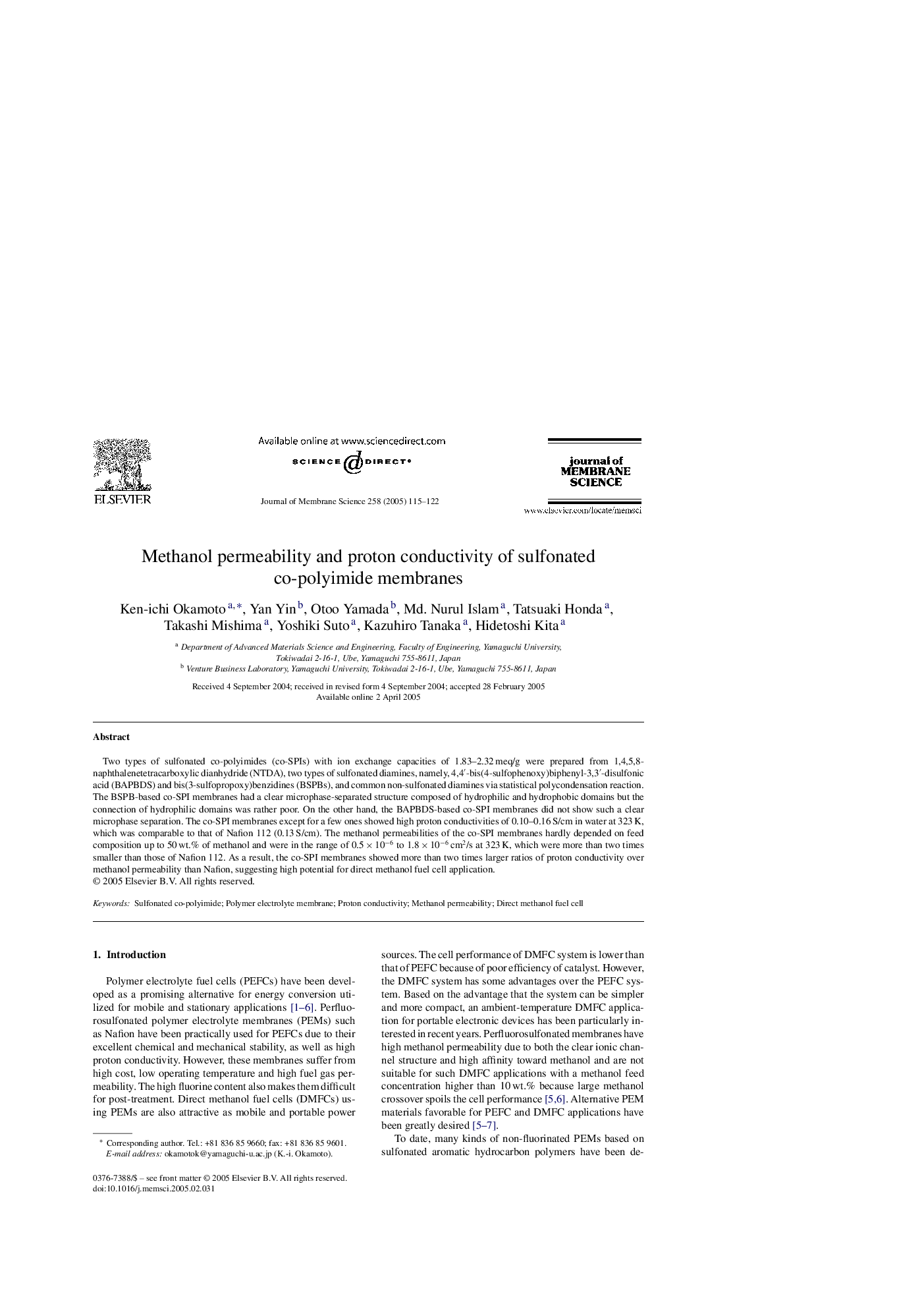| Article ID | Journal | Published Year | Pages | File Type |
|---|---|---|---|---|
| 9684765 | Journal of Membrane Science | 2005 | 8 Pages |
Abstract
Two types of sulfonated co-polyimides (co-SPIs) with ion exchange capacities of 1.83-2.32Â meq/g were prepared from 1,4,5,8-naphthalenetetracarboxylic dianhydride (NTDA), two types of sulfonated diamines, namely, 4,4â²-bis(4-sulfophenoxy)biphenyl-3,3â²-disulfonic acid (BAPBDS) and bis(3-sulfopropoxy)benzidines (BSPBs), and common non-sulfonated diamines via statistical polycondensation reaction. The BSPB-based co-SPI membranes had a clear microphase-separated structure composed of hydrophilic and hydrophobic domains but the connection of hydrophilic domains was rather poor. On the other hand, the BAPBDS-based co-SPI membranes did not show such a clear microphase separation. The co-SPI membranes except for a few ones showed high proton conductivities of 0.10-0.16Â S/cm in water at 323Â K, which was comparable to that of Nafion 112 (0.13Â S/cm). The methanol permeabilities of the co-SPI membranes hardly depended on feed composition up to 50Â wt.% of methanol and were in the range of 0.5Â ÃÂ 10â6 to 1.8Â ÃÂ 10â6Â cm2/s at 323Â K, which were more than two times smaller than those of Nafion 112. As a result, the co-SPI membranes showed more than two times larger ratios of proton conductivity over methanol permeability than Nafion, suggesting high potential for direct methanol fuel cell application.
Keywords
Related Topics
Physical Sciences and Engineering
Chemical Engineering
Filtration and Separation
Authors
Ken-ichi Okamoto, Yan Yin, Otoo Yamada, Md. Nurul Islam, Tatsuaki Honda, Takashi Mishima, Yoshiki Suto, Kazuhiro Tanaka, Hidetoshi Kita,
